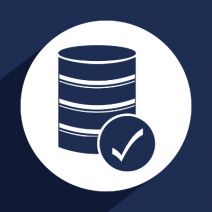SMART Blog
Disaster Recovery: What You Should Know
 Everything is fine and dandy in your office. Everyone is working at a desirable rate, and you’re getting more business than ever before. Then, disaster strikes. Your server overheats, causing irreparable hardware failure, and you’re immediately caught in a pickle. Operations screech to a halt, data is lost, and you’re stuck in a situation that puts your business’s future in jeopardy. Of course, all of this can be quickly remediated with a quality disaster recovery plan.
Everything is fine and dandy in your office. Everyone is working at a desirable rate, and you’re getting more business than ever before. Then, disaster strikes. Your server overheats, causing irreparable hardware failure, and you’re immediately caught in a pickle. Operations screech to a halt, data is lost, and you’re stuck in a situation that puts your business’s future in jeopardy. Of course, all of this can be quickly remediated with a quality disaster recovery plan.
Some businesses go about their day-to-day duties without a solid business continuity plan. As explained in the above scenario, an external backup is paramount to the survival of your organization, should you face circumstances that threaten to uproot your operations. This generally entails taking snapshots of your business’s data using some sort of backup method.
One of the most common methods of doing so is using tape to store data. The problem with tape is that, in physical form, it can easily be destroyed if accidentally left on-site during a flood, fire, earthquake, or another equally devastating disaster. Furthermore, tape backups can be time-consuming, so they’re generally performed after hours; even then, they’re usually only performed once every 24 hours or so, which means that you run the risk of losing that much data in the face of a disaster. Since tape backups often need to be run manually, they’re also more prone to user error than other automated systems.
These are just a few reasons why it’s important that you consider your backup and disaster recovery solution carefully. There’s nothing wrong with using tape, but it’s an outdated system that pales in comparison to other, more modern solutions. You want a solution that stores your data in a secure, off-site data center.
Unlike data backup, data recovery is the act of restoring from the backups stored in a data center in order to offset data loss caused by any number of variables, like the destruction of hardware, or even user error. The quality of data recovery is generally based on how quickly it can restore your data; therefore, the faster a solution can get you back in action following a major loss of data, the better an asset it is to your business.
Of course, data backup and disaster recovery are two very different things that often go hand-in-hand. Take, for instance, our Backup and Disaster Recovery (BDR) solution. It’s a backup solution that takes multiple snapshots of your business’s data, which is then stored off-site and in the cloud for later access, combined with rapid data recovery that helps your business get back in action in a moment’s notice. Unlike our BDR, tape backups can be time-consuming, and when time is of the essence, it can be difficult. BDR ensures that your data is always backed up and readily available when you need it most.
It should also be mentioned that our BDR solution has the ability to temporarily take the place of your server in the event of a hardware failure. This adds to the value of your investment, and can help you get the ball rolling again while you decide how to replace your hardware.
If you’re ready to start taking proactive measures to ensure the continuity of your business and its data, give us a call at 586 258-0650 .




Comments